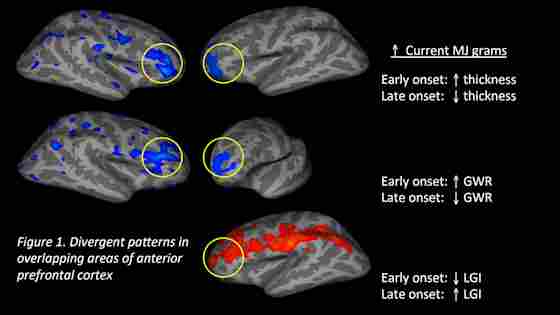Starting Age of Marijuana Use May Have Long-Term Effects on Brain Development
The age at which an adolescent begins using marijuana may affect typical brain development, according to researchers at the Center for BrainHealth at The University of Texas at Dallas. In a paper recently published in Developmental Cognitive Neuroscience, scientists describehow marijuana use, and the age at which use is initiated, may adversely alter brain structures that underlie higher order thinking. Findings show study participants who began using marijuana at the age of 16 or younger demonstrated brain variations that indicate arrested brain development in the prefrontal cortex, the part of the brain responsible for judgment, reasoning and complex thinking. Individuals who started using marijuana after age 16 showed the opposite effect and demonstrated signs of accelerated brain aging. “Science has shown us that changes in the brain occurring during adolescence are complex. Our findings suggest that the timing of cannabis use can result in very disparate patterns of effects,” explained Francesca Filbey, Ph.D., principal investigator and Bert Moore Chair of Behavioral and Brain Sciences at the Center for BrainHealth.“Not only did age of use impact the brain changes but the amount of cannabis used also influenced the extent of altered brain maturation.” The research team analyzed MRI scans of 42 heavy marijuana users; twenty participants were categorized as early onset users with a mean age of 13.18and 22 were labeled as late onset users with a mean age of 16.9. According to self-reports, all participants, ages 21-50, began using marijuana during adolescence and continued throughout adulthood, using cannabis at least one time per week.
